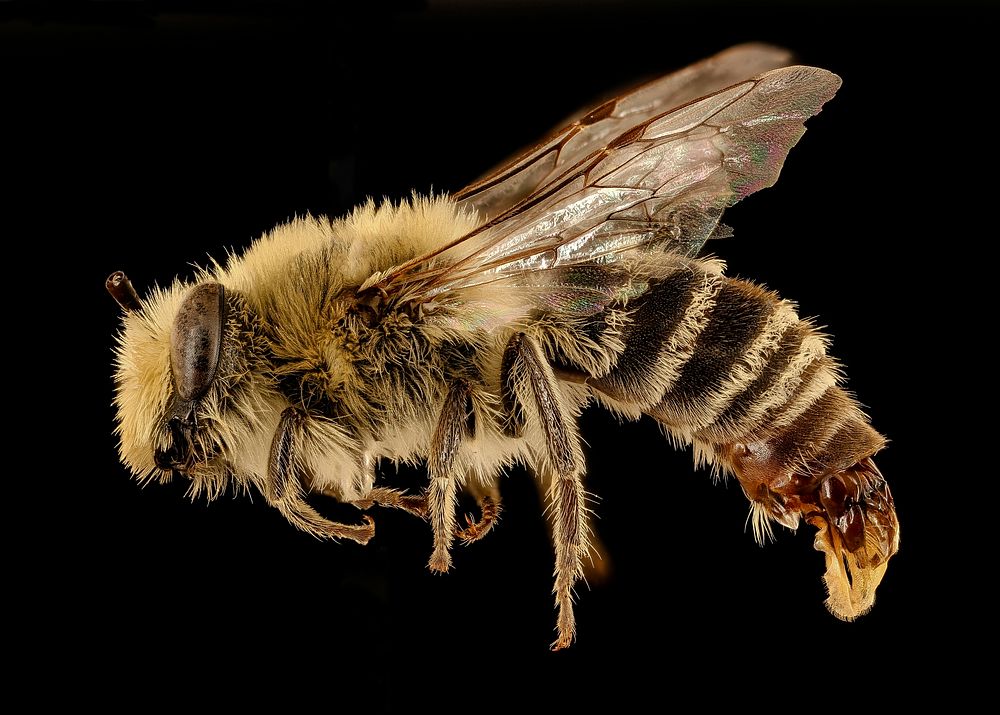
Colletes kincaidii, f, right, Grant Co., Hyannis, NE_2018-08-10-15.59.54 ZS PMax UDR
Colletes kincaidii, Kincaid’s Cellophane Bee, is a common bee throughout the Rockies and northern half of the U.S. (1) This is a summer bee, active June through September (1). Colletes tend to nest in aggregations, frequently appearing as small colonies (2). They are cavity-nesters, and C. kincaidii is one of a very few bees that nests in very hard surfaces such as sandstone cliffs or even mortar (2,3). C. kincaidii can excavate their own nests in these surfaces, but also reuse nests excavated by other bees in previous years (3). They also nest in the soil (2). These are generalist bees and feed on many flower families (1). Interestingly, they tend to only collect pollen for their offspring from only one kind of blooming flower at a time, demonstrating “floral fidelity” (2). C. kinkaidii is a host for the cleptoparasitic bee Epeolus compactus (2). Cleptoparasitic bees, also known as “cuckoo bees,” will lurk around the nest sites of their host species. When the adult female vacates the nest, the cuckoo bee seizes the opportunity to enter the nest and lay her own egg. Her offspring hatches first, destroying the egg or larva of the host, and consuming its food provisions. “The Solitary Bees: Biology, Evolution, Conservation” by Bryan N. Danforth, Robert L. Minckley, John L. Neff, Frances Fawcett. Original public domain image from Flickr